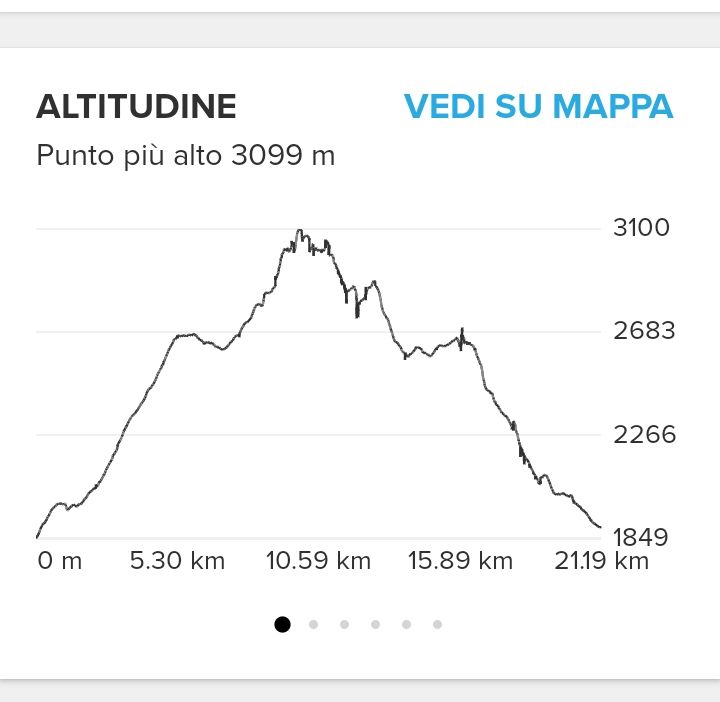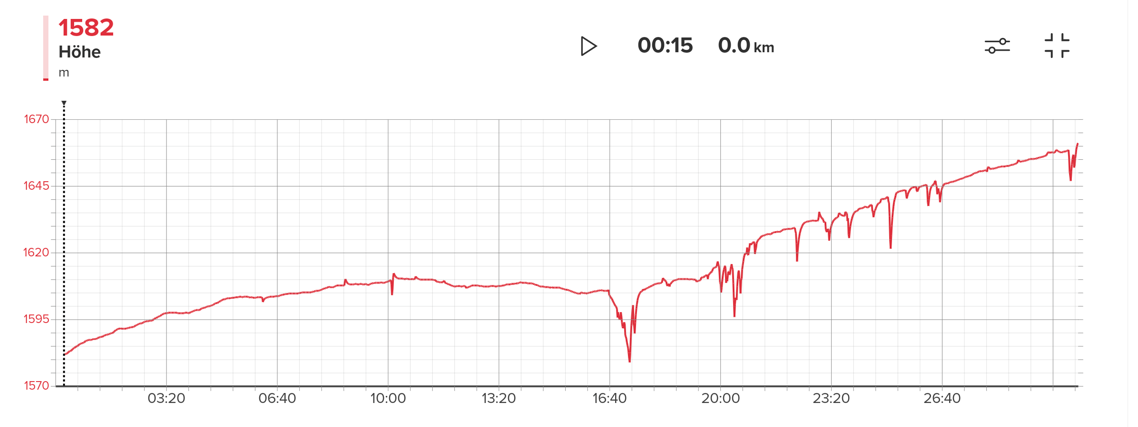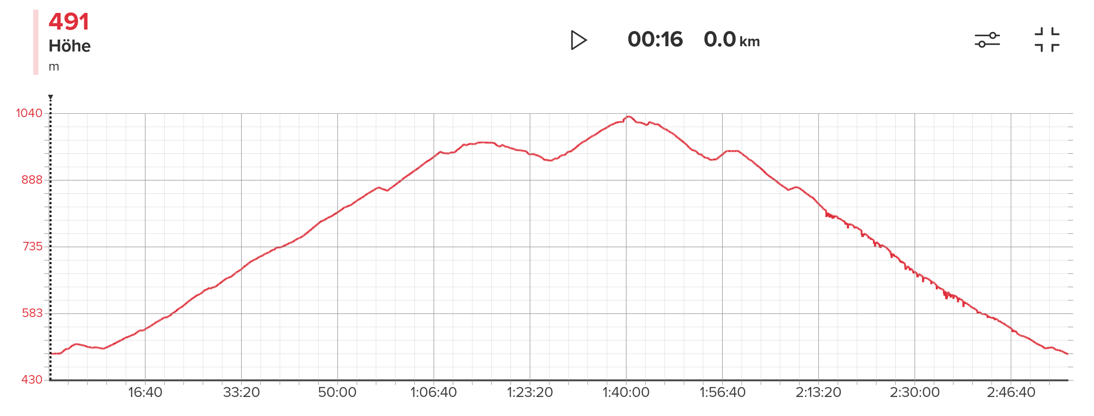NO GOOD DATA ASCENT (AND DESCENT)
-
@matteo-zambenedetti I understand that the watch says the same than the Suunto app, am I right?
I want to see if the ascent graph from the watch has spikes, so it means that for some reason the baro sensor has been blocked (skin, jacket, wind,…) and for that reason you have higher ascent than expected.
-
@cosme-costa I understand what you mean. I therefore report the profile of my excursion: you will notice that there are no peaks.
However, if there were, Openrunner would have had to show me the same rise as Suunto. My problem is why was my 9 baro wrong?

-
@matteo-zambenedetti
because of several small spikes that I can already see without zooming in… maybe the other platform filters it by default? Strava filters by request -
@freeheeler Does your 9b the same?
-
@matteo-zambenedetti
yes, when the wrist strap is too tight and baro holes seal on wet skin, it catches wind gusts or wet garment is covering the baro holes…
check with your next activity and a bit looser wrist strap
-
@freeheeler Ok thanks, I will try this week-end.
-
@matteo-zambenedetti As @freeheeler says, you can see the small spikes that are adding ascent. The shape of the profile is quite correct as it is the min and max height, but during the activity it has been adding small ascent. And as it has been said probably because the baro sensor has been blocked.
I only have had this situation once and it was because it was raining and I was wearing the watch over my membrane jacket and the jacket blocked intermittently the baro sensor.
BTW, in which hand were you wearing the watch? Did you use poles? I ask this because this could increase the chances of blocking the sensor.
-
I’ve the same problem here (Suunto 9 baro). Most times when i start the descent, it adds more and more meters to ascent (real ascent was about 1100 m and real descent was 1900 m; at the end of the activity I had 3300 m (!)
Weather was stable; not much wind, barometer was free… but anyways… the watch is made for outdoor sports; or not?
The climbing activity is complete useless. After a few minutes there are unrealistic ascents and descents of several 100 meters.
-
@Oliver-Zamberger
please share your alti graph -
As you can see it the issues starts when descending (it was yesterday). At the end I it added about 200 m more in ascent (and descent too).
Ascent/Descent in reality: 635 m
Ascent/Descent from the watch: 850 mThe longer the activity is, the more the deviation goes up
And here the climbing graph (completly useless):

-
@Oliver-Zamberger From what I see in the graphs, for some reason you or something are blocking the baro holes, so you have a pumping effect. Maybe your skin, maybe wind, maybe some of your gear… It could be that the sensor is faulty as well but I would try to analyze how was your activity and detect what could have blocked the baro sensor (the very few times that I had this I could identify the causes to avoid it in the future).
-
@cosme-costa Actually there was nothing blocking the baro holes (no shirt or something else). It just could be the skin; but movements are natural in activity. It’s diffcult to not use the hand while climbing…So maybe the baro is placed on a wrong place on the watch; maybe it should be placed on top side of the watch?
on the first graph I didn’t use the hands much; just walked downwards and the hands were all free
-
@Oliver-Zamberger Position of the sensor is really important but I guess not all the positions are ideal. I mean for the S9B, if you wear it in the left hand sensor is less exposed but if you wear it on the right it is more exposed for wind and hand movement. All the position have its downsizes.
I do not know how your arm is or how tight you wear your watch, all this could affect, in my case I have tinny arms and it is impossible to me to block the sensor wearing the watch in the left arm. I am extremely happy with the accuracy and reliability of the ascent/descent values.
In your case, I don’t think the sensor is faulty because the shape of the profile is OK and the values in a fixed point seem also correct. When the sensor has issues the pressure values change all the time.
Could be that your sensor is partially blocked ? I mean, if some of the sensor holes have dirt it is more easy to block. In my case I always rinse the watch with tap water after my activities and I never shower with it to be sure that sweat/dirt/soap don’t block the tinny holes.
-
@cosme-costa I wear the watch on the left. not too tight (as recommended). So naturally if i use/move my left hand up (climbing for example), it may be, that the baro is covered shortly. So I ask myself, if there’s a climbing activity on the watch, it was made for this too and the hand movements shouldn’t be a problem at all… more less at hiking.
The problems started several months ago. After some time it was better again. But during the last weeks it’s really bad again.
-
@Oliver-Zamberger I mostly do trail running with my watch but I did some indoor climbing with the watch, as other people that I follow in SA, without problems, consistent data and graph. I also did recently a trail running activity where I had to climb quite a lot and everything looks fine.
Wear your watch, do hand movements and check if there is any possibility of covering the holes. You can also try to clean the sensor, lukewarm water with soft soap and baby toothbrush (do not push hard into the sensor holes) and if still doesn’t work properly you can contact support, if the watch is still under warranty service will be free of charge and if you are out of warranty they will send you a quotation with the cost of the reparation (this last part I do not know for sure because I’ve never used it).
-
@Oliver-Zamberger
very nice graph, thank you
this spikes are typically for what @cosme-costa suspects and I see that with few of my activities, too.
placing the baro holes will always be a compromise and I think there will hardly be THE perfect spot. I am with you that they should be on the side and I mentioned this many times in surveys. I assume the result is what we see at the S9P.
But other locations have other compromises, e.g. prone to wind, prone to hard rain etc.observe it, maybe loosen the strap by one hole and enjoy the sports


-
@freeheeler @cosme-costa Thank you. I’ll try it with the water and soap. I let you know the outcome.
-
@cosme-costa Now I tried that cleaning several times. on the last hike there was no wrong data; so it seems that helped.
Climbing was a bit better too; but still kinda much wrong data; because of the hnd motions while climbng. So I assume the watch isn’t made for this and that’s really a pity. But when climbing, there are naturally much motions with hands.
-
@Oliver-Zamberger
good to hear that cleaning helped.
I am not sure if hand motion of climbing does cause wrong values. there’s a threshold that helps to filter. and despite for clipping quickdraws and then the rope you normally do the hand motion only once, right? -
@Oliver-Zamberger you could switch watch hands for climbing, that might work.
